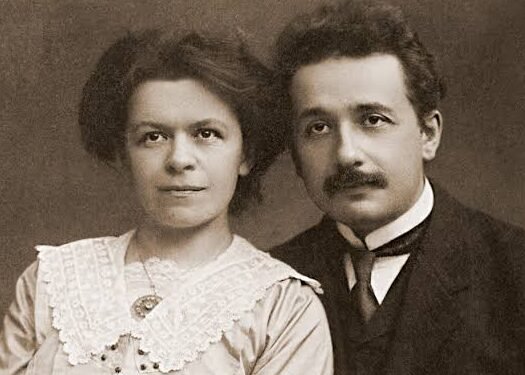
The L word – Leadership Coaching with Love
“To handle yourself, use your head; to handle others, use your heart.” Eleanor Roosevelt
Love & Leadership? How do those two fit together? During these unprecedented times, leadership has been more in demand and has become more challenging in the world. But how can we lead with love when leaders are afraid? Fear has taken over almost every part of our lives, and rightfully so. Many companies do not even have foreseeable revenue to sustain the economic storm beyond COVID-19. Mass layoffs, rising unemployment, and overextended debts have created a warranted crisis of leadership. Today, the world needs more conscious leaders leading with love, empathy and inclusiveness.
When a leader leads from a place of fear, it can create a culture of distrust, with communication barriers and a lack of safety. They create more “dis-ease” in the organization when they are expected to lead others. The opportunities for vulnerability, inclusion, or belonging are missed, creating systemic gaps in the workplace. The impact on the product that is distributed out to the world is also impacted negatively. How can we prevent this “dis-ease” and create a culture of conscious leadership where leaders open their hearts to those they lead?
I use this 7 Step process to help leaders or organizations lead with love.
Step 1: Be Authentic.: By definition, authentic leadership emphasizes a leader’s transparency, genuineness and honesty within the workplace. But it is more than that. Many leaders struggle to be transparent, to create a culture open to vulnerability, to build courage in others, and to dare to lead with trust and integrity. What happens when we aren’t authentic as leaders? We sabotage ourselves blocking innovation and creativity. Leaders need to create an environment where individuals feel safe enough to say “I need help,” ” I made a mistake”, “I need more training.” Then the question arises: How do we become more authentic at the workplace?
“A leader is anyone who takes responsibility for finding the potential in people and processes, and who has the courage to develop that potential.” Brené Brown
Leadership courage is a skill that can be taught and learned. Authentic leaders can start by being in integrity. They can reflect upon their decisions, actions and be mindful about their strengths and weaknesses without any bias. For example, if a leader is aware enough of their trigger and the reaction that is happening in their body, they can pause during the conversation and ask themselves, “What is really bothering me? What is the underlying cause? What part of me am I not supporting that the other person is expressing to me on the outside?” Then bring compassion for the other person.
At the end of the day, that person is just like the leader, maybe with a different skin color, a different lived experience or with a different worldview. But on so many levels, they are not that different. We all want safety, shelter, love, and acceptance. So now if the leader just takes a step back and recognizes that however this person is showing up has nothing to do with them and it’s not personal, the whole energy of the conversation would be shifted to a more constructive and progressive direction.
Step 2: Be mindful.: Leaders who are currently immersing themselves in understanding, learning and cultivating to become the best version of themselves, are helping to meet today’s challenging circumstances with compassion, wisdom and clarity. Mindfulness is a key part of conscious leadership. What is mindfulness? My definition: Mindfulness is the constant awareness of being unmindful, along with a focus on conscious, moment-to-moment awareness. By building that self-awareness muscle we can take away all the judgements. We become aware of where the emotions are appearing from. Once we recognize the sources we can turn these emotions into our power.
The capacity to make intelligent decisions directly impacts the effectiveness of teams and functioning of an organization. Even though this can be an in-depth personal development program, you can start practicing and introducing mindfulness at work. It would be a huge leap toward creating a positive environment and increasing productivity.
As Peter Drucker’s said “You cannot manage other people unless you manage yourself first.”
Step 3: Lead with love.: Love in the corporate culture often gets overlooked. Leaders do not feel comfortable to show their love as it’s often perceived as their weaknesses or vulnerability. Sometimes ego or other negative thoughts prevent them from expressing their love in the workplace. Love is a magical energy. It has a vibration of care, gratitude and authenticity. When we lead from scarcity and fear we create a more toxic environment. Love can emit light in this condition. Showing empathy towards the team or others is magnetic. It has a ripple effect on others. It connects people with compassion, improves productivity, and boosts organizational growth. Even starting with a few small steps can shift the dynamic of the organization. For example, as a leader we can make conscious decisions of how much are we asking of people at this time. Are we taking the feedback from the team and setting realistic goals? Are we being really effective by calling many meetings we’re asking our team to attend? As leaders, are we being conscious of a work-life balance? Are we leaving late from work and creating expectation for our team to leave late? Are we expecting them to answer emails around the clock? How can I support you? Listen, learn, love and lead.
Step 4: Have a Growth Mindset.: Having a growth mindset is vital in conscious leadership. It helps leaders to get comfortable with ambiguity and uncertainty. Leaders with a fixed mindset believe that they have only basic abilities, intelligence, talents and their underlying goal is to look smart and never fail. They usually will not go out of their comfort zone, because of fear of failure. They only want to do what they know that they can do well. On the other hand, people with a growth mindset embrace uncertainty, and often push themselves out of their comfort zone. I would say that the leaders that really thrived in this pandemic were willing to take on a growth mindset. When difficulty or obstacles arise, the good indicators of growth mindset are, instead of, “Why is this happening to me?” “How is this for me?”
Step 5: Cultivate Resilience and Grit: Resilience is your ability to bounce back from setbacks, challenges and failures. It’s understanding how to navigate through challenges aspects by embracing pain. Grit is your tenacity, will power and perseverance coupled with your passion to get through tough times and work towards your goals. As a leader, we are constantly facing challenges. When we have resilience and grit, we develop a fierce capacity to rise up again and again. We can lead with more empathy and compassion without engaging in dysfunctional behavior. We can start by asking ourselves a few questions to make the situation more constructive. “What can we control?” “Are we seeing these setbacks as a challenge, and an opportunity for learning and growth?” “Can you trust that this is serving your greatest good?” and “What can you commit to that would help you to move forward? Adversity will always be a part of life. The true resilience is “What is the silver lining?”
Step 6: Embrace Diversity, Equity and Inclusion (DEI): Instilling trust should be the most important priority of a CEO. Having a true alignment with the organization’s vision and mission, we also need to build our own organizations with diversity, equity and inclusion in the forefront of everything we do. Understanding the layers of diversity, unconscious bias can help ensure that prejudiced behavior doesn’t negatively affect how we behave that we are inclusive, fair and respectful to others. Training leaders on DEI will build awareness and practice understanding how to identify biased behavior and imply a zero tolerance policy. Do your employees feel included? Do they feel they can really speak up? How can you eradicate microaggressions in the workplace? How can you change what’s happening with each individual leader on the inside, so that they can create more safety and trust on the outside? When employees feel unwelcome, their morale, focus and engagement decrease and create an adverse effect on their productivity.
Step 7: Self-Leadership: It’s time to Focus on You: A great team requires an emotionally centered visionary leader. It takes an incredible amount of emotional fitness and wisdom to be an amazing CEO or leader in any space. Your team is always responding to your energy. Leaders need to develop their inner powers to better manage their outer challenges. But leaders can get lonely. They also need motivation, inspiration and tools for self-management. It begins with giving yourself permission to take time out to reflect, recharge and refocus on you.
“Mastering others is strength. Mastering yourself is true power.” Lao Tzu
You can start with asking yourself: – Am I in alignment with my spiritual, emotional, physical and other goals? Do you know how you are going to show up today? Do you have a morning routine? What is your grounding exercise? Do you know how to take a mental pause before responding or reacting to others? These are just few micro steps. Leaders can also invest in coaching as a most effective means for personal and professional growth. Every leader needs a coach.
As leaders, we each bring our own unique skills and strengths to the world around us. Leaders need to build, love, listen, inspire and lead others to make meaningful change. We are not only leaders; we are the “agents of change”. Throughout my career I’ve witnessed in myself and many others how compassion brings profound happiness, peace and belonging. As the CEO of my leadership coaching business, I empower female leaders to look within and reclaim their personal and professional power to make their teams and organizations better than they found it. Research by Valerie [Kaur] published by Harvard, shows that we only need 3.5% of people to shift, to really create this very big change in the world. Why not you? Let’s be accountable for the people who are in our charge. Let’s lead with love.
Acknowledgments:
I want to thank Brené Brown: ‘Dare to Lead’ and Carley Hauck: ‘Shine’ to inspire me to write this article and to lead with more empathy and courage every day.
Sarah Rajkumar, Founder & CEO of WOMBB, Leadership And Success Coach.
To know more about the author, visit this link.













